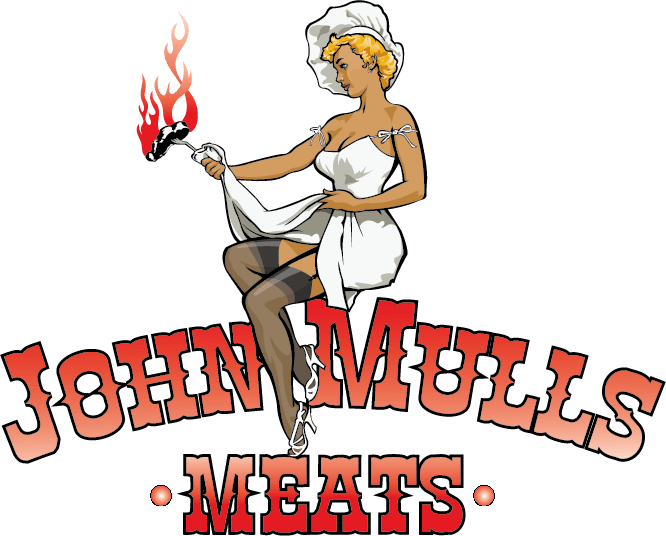Smoking meat is an age-old tradition that transforms cuts of meat into tender, smoky, and flavor-packed dishes. If you’re new to the world of smoking, the process can seem intimidating—but it doesn’t have to be. At John Mull’s Meats & Road Kill Grill, we’ve perfected the art of smoking meat, and we’re here to share the secrets with you.
This beginner’s guide will walk you through the essentials of smoking meat so you can achieve mouthwatering results and impress your friends and family.
1. Understand the Basics of Smoking Meat
Smoking meat involves cooking it slowly at a low temperature while infusing it with smoky flavors from wood chips or chunks. This method not only enhances the flavor but also tenderizes the meat over time.
Key Terms to Know:
- Low and Slow: Smoking meat at low temperatures (200–250°F) for an extended period.
- Bark: The flavorful crust that forms on the outside of the meat during smoking.
- Pellet Smoker: A type of smoker that uses wood pellets for fuel and precise temperature control.
Pro Tip: Patience is key! Smoking meat can take hours, but the results are worth it.
2. Choose the Right Smoker
Your choice of smoker plays a big role in your smoking success. Here are the most common types:
Offset Smoker:
- The classic smoker design with a firebox on the side.
- Offers excellent smoky flavor but requires more skill to maintain temperature.
Pellet Smoker:
- User-friendly with precise temperature control.
- Great for beginners who want convenience without sacrificing flavor.
Electric Smoker:
- Easy to use and perfect for smaller spaces.
- Produces less intense smoke flavor compared to other types.
Pro Tip: If you’re just starting out, a pellet smoker or electric smoker is a great choice for consistent results.
3. Select the Right Cut of Meat
Not all meats are created equal when it comes to smoking. Some cuts are better suited to the low-and-slow process.
Best Cuts for Smoking:
- Brisket: A classic choice that’s rich in flavor when cooked properly.
- Pork Shoulder (Boston Butt): Perfect for pulled pork with a tender, juicy texture.
- Ribs: Both baby back and spare ribs are ideal for smoking.
- Chicken: Whole chickens or thighs take on smoke beautifully.
- Salmon: A great option for those who prefer seafood.
Pro Tip: Choose cuts with good marbling (fat content), as the fat keeps the meat moist during smoking.
4. Pick the Right Wood for Smoking
The type of wood you use will greatly influence the flavor of your meat.
Popular Woods for Smoking:
- Hickory: Strong, smoky flavor—great for ribs and brisket.
- Applewood: Mild and sweet—perfect for chicken and pork.
- Mesquite: Bold and earthy—best used in moderation or mixed with other woods.
- Cherry: Fruity and slightly sweet—pairs well with poultry and pork.
Pro Tip: Experiment with wood combinations to create your own signature flavor.
5. Prepare the Meat
Proper preparation is crucial to successful smoking.
Steps to Prepare Meat for Smoking:
- Trim Excess Fat: Remove large fat caps, but leave a thin layer for moisture and flavor.
- Season Generously: Apply a dry rub or marinade to enhance flavor. For beginners, try this simple BBQ rub:
- 2 tablespoons brown sugar
- 1 tablespoon smoked paprika
- 1 teaspoon garlic powder
- 1 teaspoon onion powder
- 1 teaspoon salt
- ½ teaspoon black pepper
- Let It Rest: Allow the meat to rest with the seasoning for at least 30 minutes before smoking.
6. Master Temperature Control
Consistent temperature is the cornerstone of successful smoking.
Tips for Maintaining Temperature:
- Preheat your smoker before adding the meat.
- Use a thermometer to monitor both the smoker temperature and the internal temperature of the meat.
- Avoid opening the smoker frequently, as this releases heat and smoke.
Target Temperatures for Smoking:
- Brisket: 225–250°F
- Ribs: 225–250°F
- Pork Shoulder: 225–250°F
- Chicken: 225–250°F
Pro Tip: Invest in a dual-probe thermometer for accurate temperature readings.
7. Add Smoke at the Right Time
Too much smoke can overpower the flavor of the meat. Follow these guidelines:
- Add wood chips or chunks to the smoker at the beginning of the process.
- Once the meat forms a bark (about halfway through cooking), reduce the amount of wood added.
Pro Tip: The first few hours of smoking are the most important for infusing flavor.
8. Know When Your Meat is Done
Smoking meat is all about timing and internal temperatures. Use a meat thermometer to determine doneness:
Internal Temperature Guide:
- Brisket: 195–205°F (for tender, sliceable meat)
- Pork Shoulder: 195–205°F (for pull-apart tenderness)
- Ribs: Meat should pull away from the bones easily.
- Chicken: 165°F (safe internal temperature)
Pro Tip: Let your meat rest for 15–30 minutes after smoking to allow the juices to redistribute.
9. Experiment with Sauces and Sides
No BBQ is complete without delicious sauces and sides.
Classic BBQ Sauces:
- Sweet and Tangy BBQ Sauce: Combine ketchup, brown sugar, apple cider vinegar, and smoked paprika.
- Spicy BBQ Sauce: Add cayenne pepper or hot sauce for extra heat.
Must-Try Sides:
- Coleslaw: A refreshing, tangy complement to smoky meats.
- Baked Beans: Rich and hearty with a hint of sweetness.
- Cornbread: A classic pairing that adds a touch of comfort.
10. Practice Makes Perfect
Smoking meat is an art that improves with practice. Don’t be discouraged if your first attempt isn’t perfect. Keep experimenting with different cuts, woods, and techniques until you find your groove.
Conclusion
With the right tools, techniques, and patience, anyone can learn to smoke meat like a pro. At John Mull’s Meats & Road Kill Grill, we’re passionate about BBQ and love helping beginners get started on their smoking journey.
Stop by our meat market in Las Vegas to pick up high-quality cuts of meat and expert advice. Or, if you’d rather skip the work, join us at the Road Kill Grill for perfectly smoked dishes every time.

